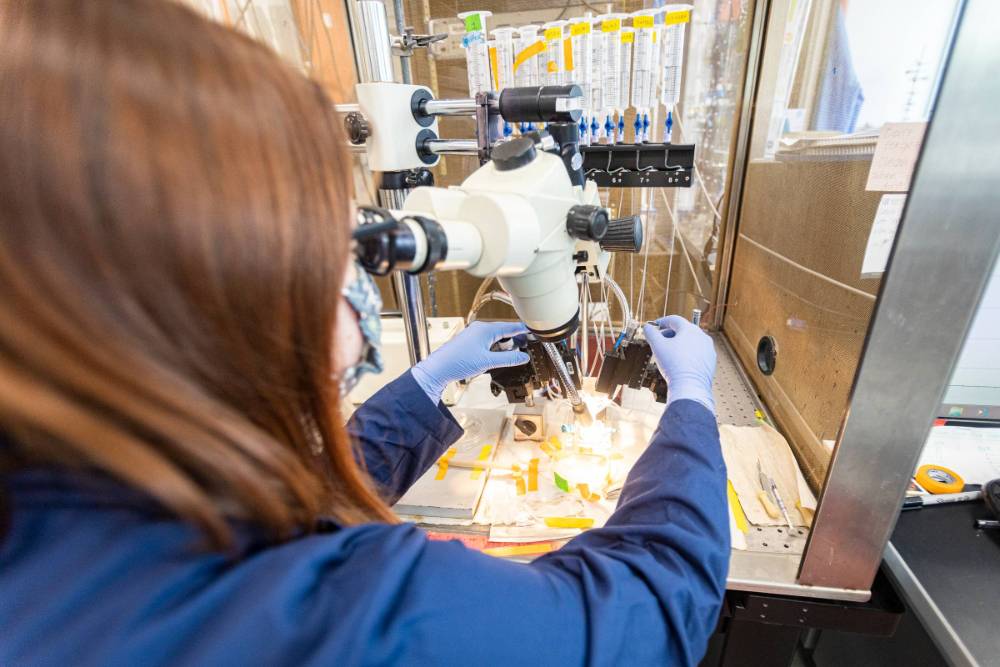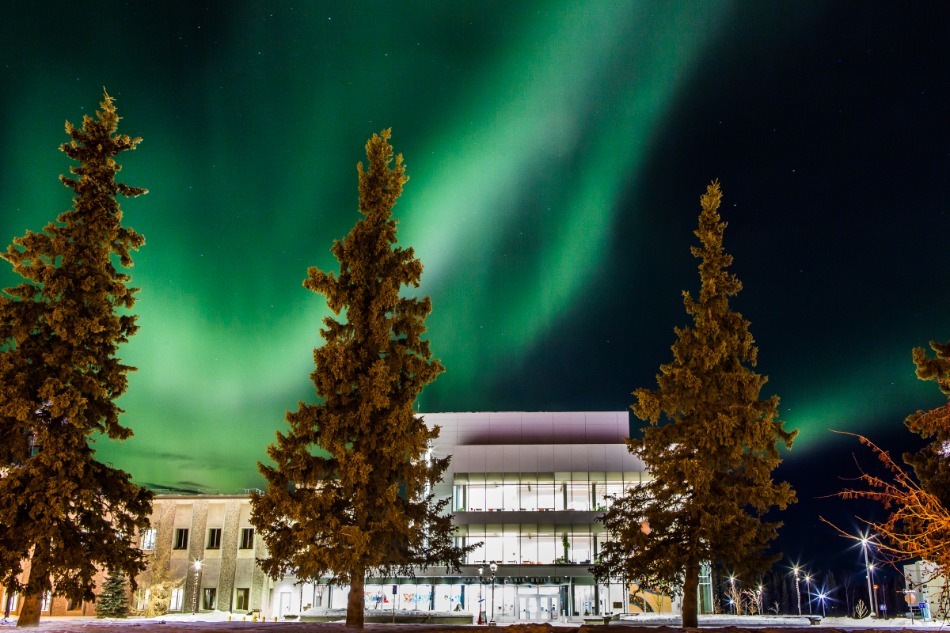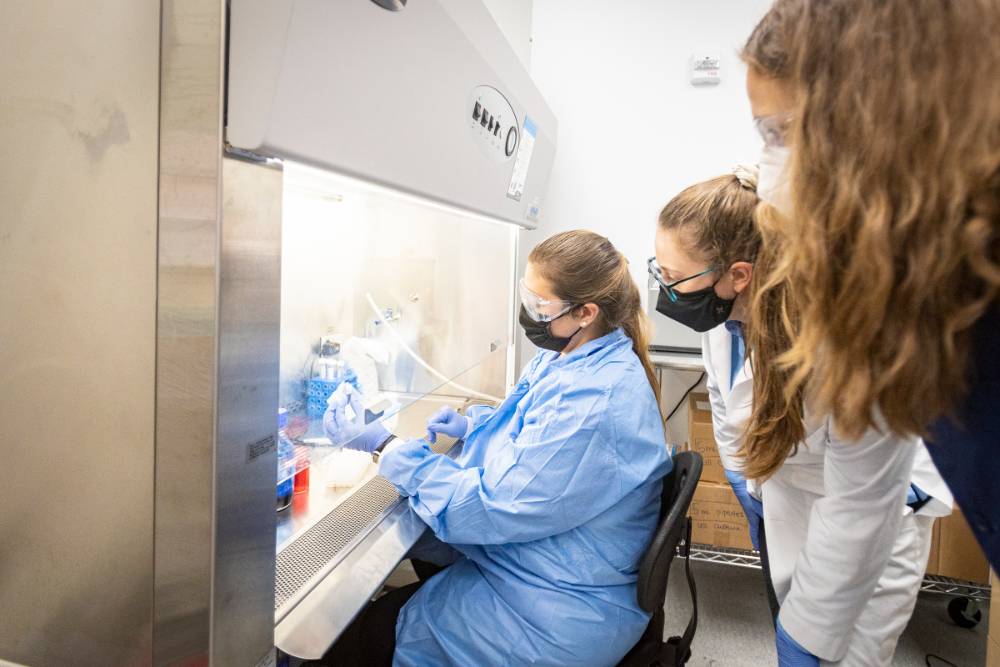Research in Chemistry and Biochemistry
UAF brings in almost 90 percent of the research dollars for the entire University of Alaska system. This means that there are tons of funding opportunities to get a running start towards your research project goals. The Department of Chemistry & Biochemistry participates and coordinates in a multitude of exciting and innovative research projects that seek to solve some of our world's most pressing problems.
Learn more about research at UAF
- Faculty members receive more than two million dollars every year in grants and contracts
- Our funding comes from:
- The National Science Foundation (NSF)
- National Institutes of Health (NIH)
- National Aeronautics and Space Administration (NASA)
- National Oceanic and Atmospheric Administration (NOAA)
- Department of Defense (DOD)
- Department of Energy (DOE)
- Other federal and private sources
- Many of our graduate students are supported through research assistantships which are funded by these grants
- We produce more than two peer-reviewed publications per faculty member per year
- Our research projects provide excellent opportunities for both graduate and undergraduate
students

Our department also operates and maintains the University's Molecular Imaging Facility which boasts two NMR spectrometers and an MRI machine.

- Graduate level students are involved in abroad array of research including laboratory, field, and international studies and collaboration.
- Our Biochemistry & Neuroscience and Environmental Chemistry PhD programs provide excellent, unique, and world changing research opportunities that equate to enhanced employability after graduation
- Our M.S. Chemistry program provides excellent training and career opportunities
- Both of our graduate programs produce degrees that are in high demand in industry, academia, and government.
Research Programs and Funding
Of the UA system colleges and universities, UAF is unique in that we work with a number of high level research institutes which provide an avenue for funding through grants, scholarships, and other support. These institutes not only help faculty support their projects but also create opportunities for undergraduate and graduate level students to participate in world changing research, all on one campus.
BLaST is a UAF undergraduate research program that specializes in biomedical and biomedicine projects. Many of the projects that undergraduates have completed through BLaST have resulted in peer-reviewed publications which they co-authored.

Alaska INBRE is a biomedical research program at UAF and is funded by the National Institute of Health (NIH) and the National Institute of General Medical Sciences (NIGMS) and is part of the broader IDeA (Institutional Development Award) program which all strive to fund biomedical research for rural and medically underserved communities. INBRE provides tons of funding opportunities for graduate level students.

URSA is UAF's resource for developing and promoting undergraduate research and scholarly activity across all disciplines. They are a funder and supporter of many undergraduate research projects and regularly award students for their projects. URSA's mission is:
At all levels, URSA aims to improve skills in critical thinking and communication and to engender a culture of life-long learning among all students, as well as enhance preparation and education of students who will fill the needs of Alaska’s 21st century workforce and society.

The University of the Arctic (UArctic) is a cooperative network of universities, research centers and other organizations
from all eight arctic nations that are committed to higher education and research
in and about the North. UArctic member institutions share resources, facilities and
expertise with students, scientists and northern communities.
Today, UArctic counts nearly 190 member institutions and organizations, including
many from countries outside the Circumpolar North: This makes it one of the world’s largest education and research network, and all
its members are engaged in northern issues.

TRiM is a research center that focuses on the study of hibernation and metabolism with the overarching goal of developing therapies to treat metabolic diseases such as diabetes, obesity, sarcopenia, and cardiovascular disease. Our very own Dr. Kelly Drew is the PI for a project called Translating Hibernation for Neurocritical Care. This project seeks to identify, understand, and develop ways to improve neurocritical care by understanding how the brain regulates metabolic suppression in hibernation. TRiM also provides pilot project funding to graduate level students and faculty.

Located just 200 miles (320 km) south of the Arctic Circle, the Fairbanks campus' unique location is well situated for arctic and northern research.
The value of scientific research includes direct investment in local economies and
improvements in community life. UAF's research engages undergraduate and graduate students so they gain skills and knowledge to become tomorrow's leaders.
Click the button below to see UAF's research facility directory.
The small class sizes at UAF and the close interaction between students and faculty provide a type of environment often missing in larger universities. Students are encouraged to visit faculty and to become involved in research as early as possible. Most of the upper division chemistry majors work in the teaching or research program. We have had numerous undergraduates co-publish their research results with faculty in the refereed scientific literature. This type of interaction, combined with a rigorous academic program, is responsible for the success of our students after graduation.
Reaching out to a faculty member is the best way to gain more insight and explore the possibilities of doing research at UAF. They can answer your questions, get you connected to resources, and help you make an informed decision about your future goals.


